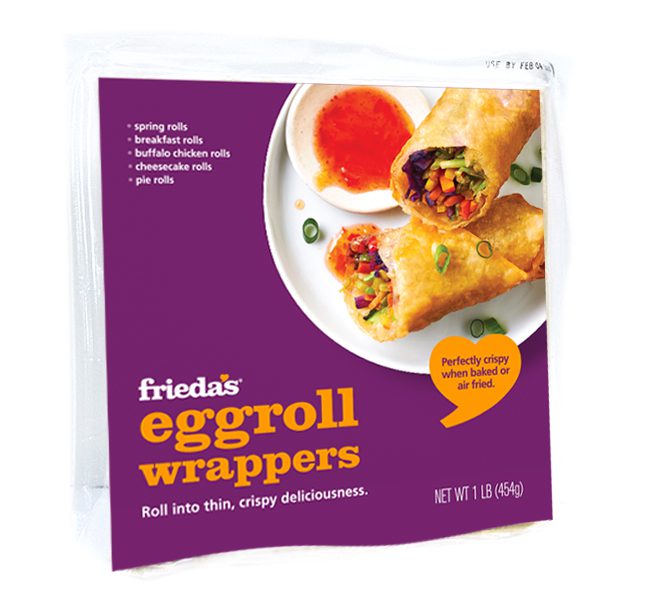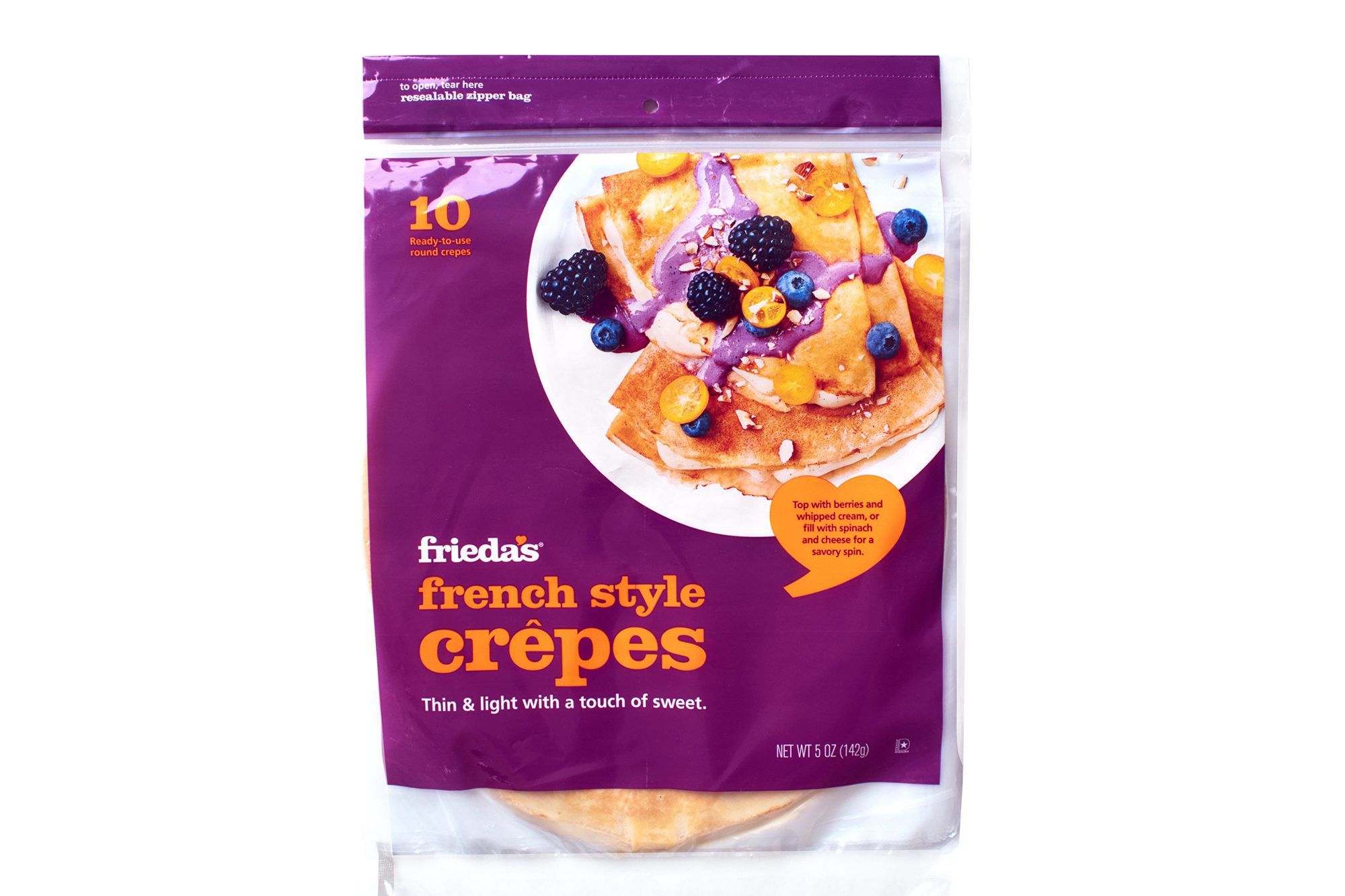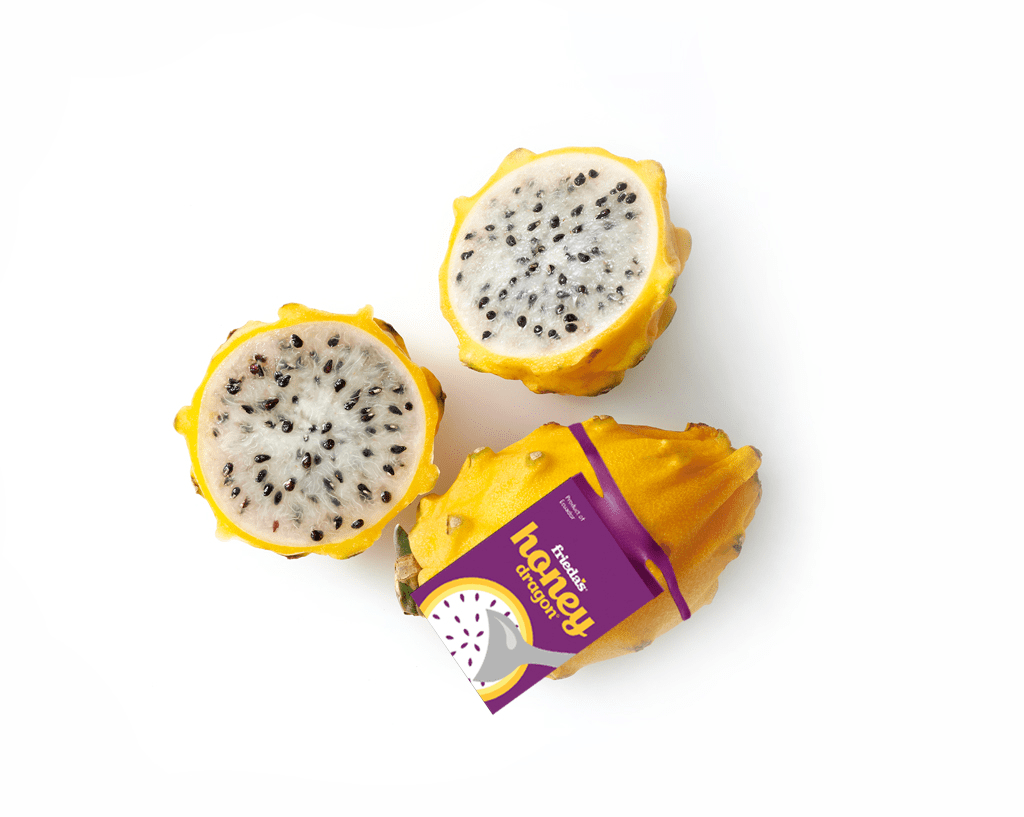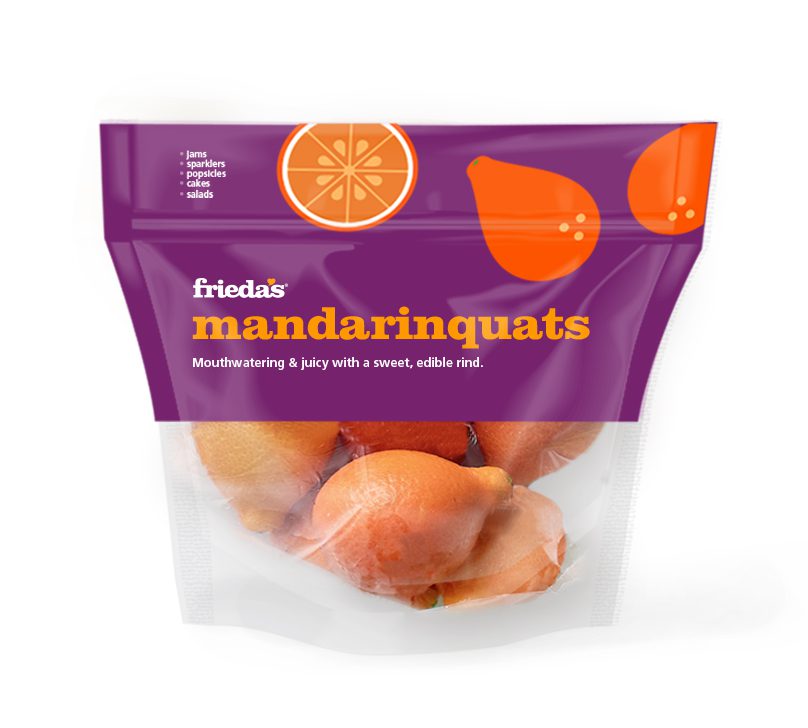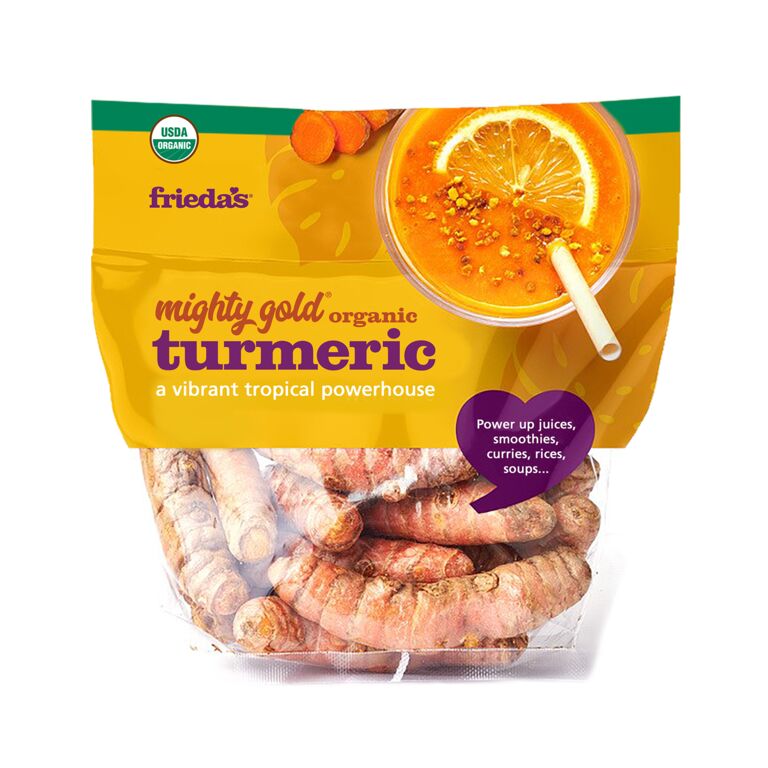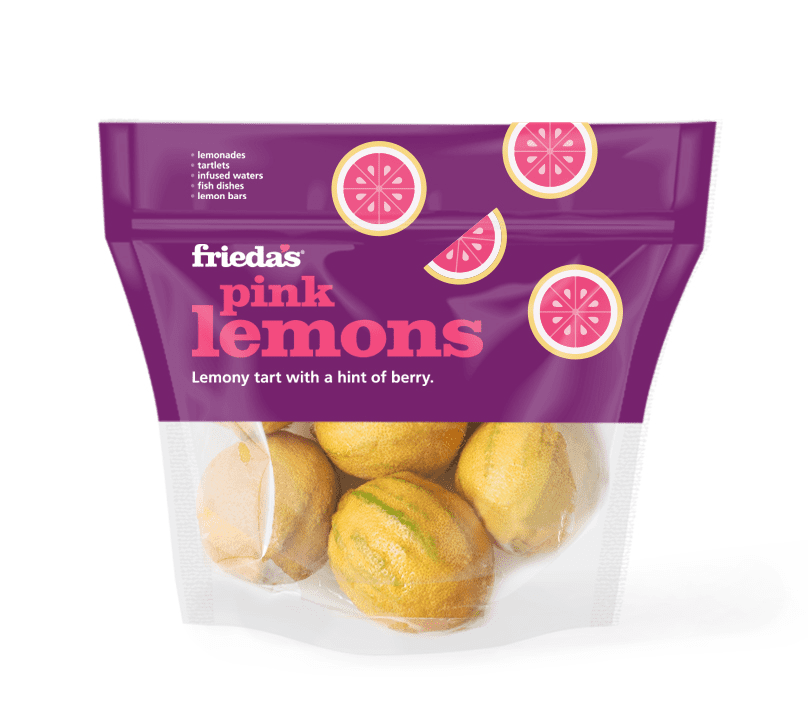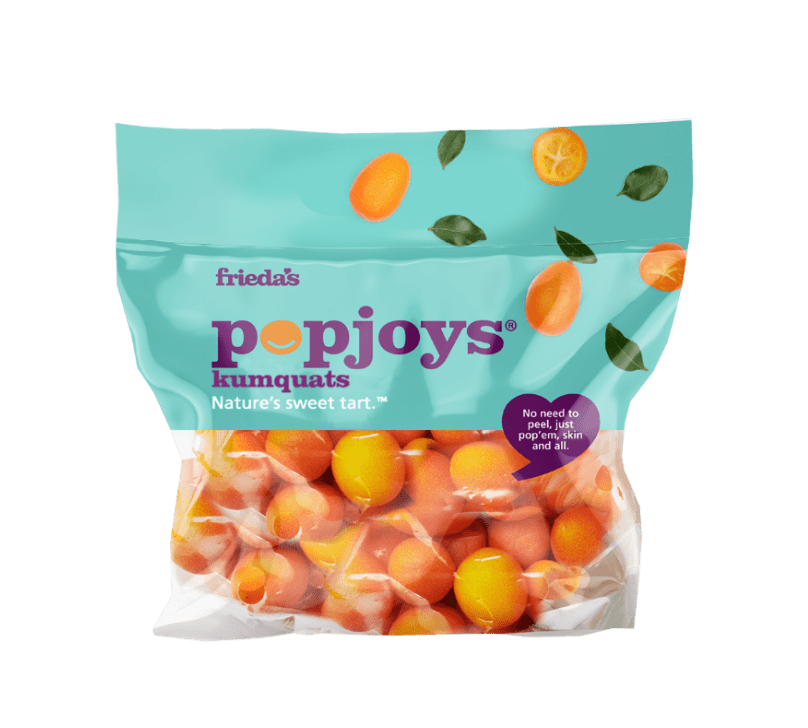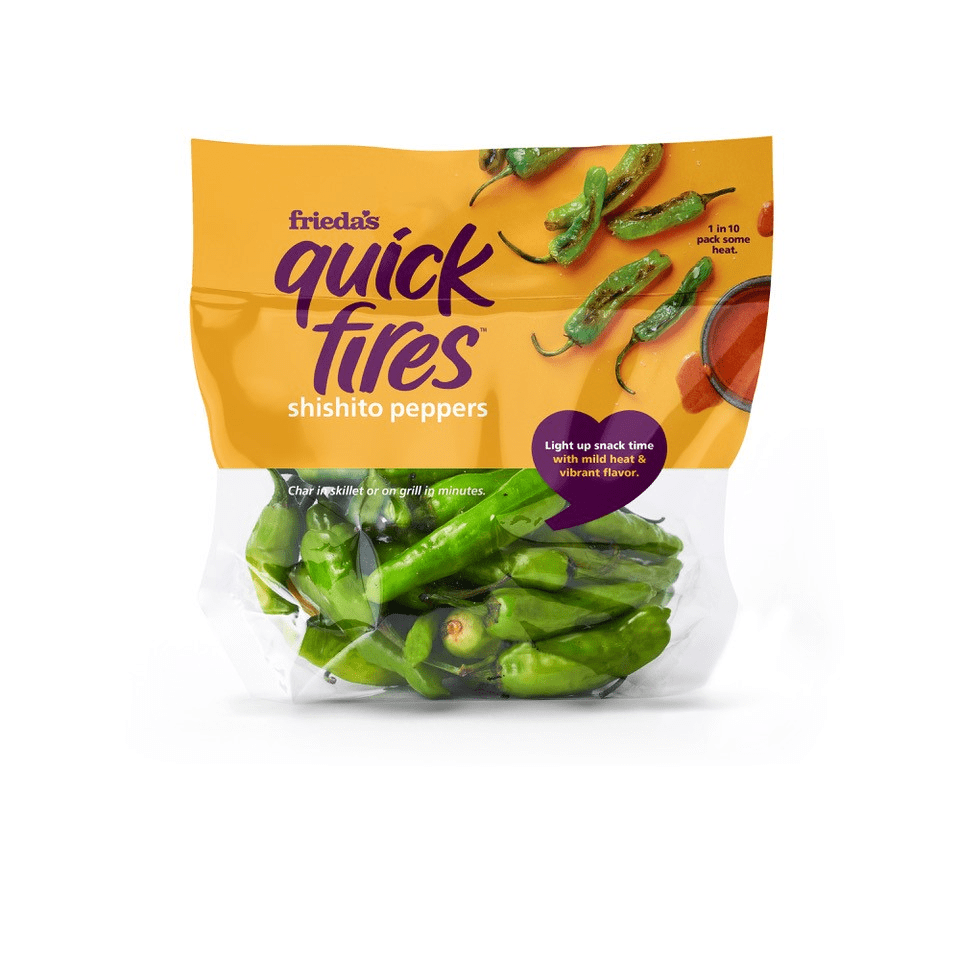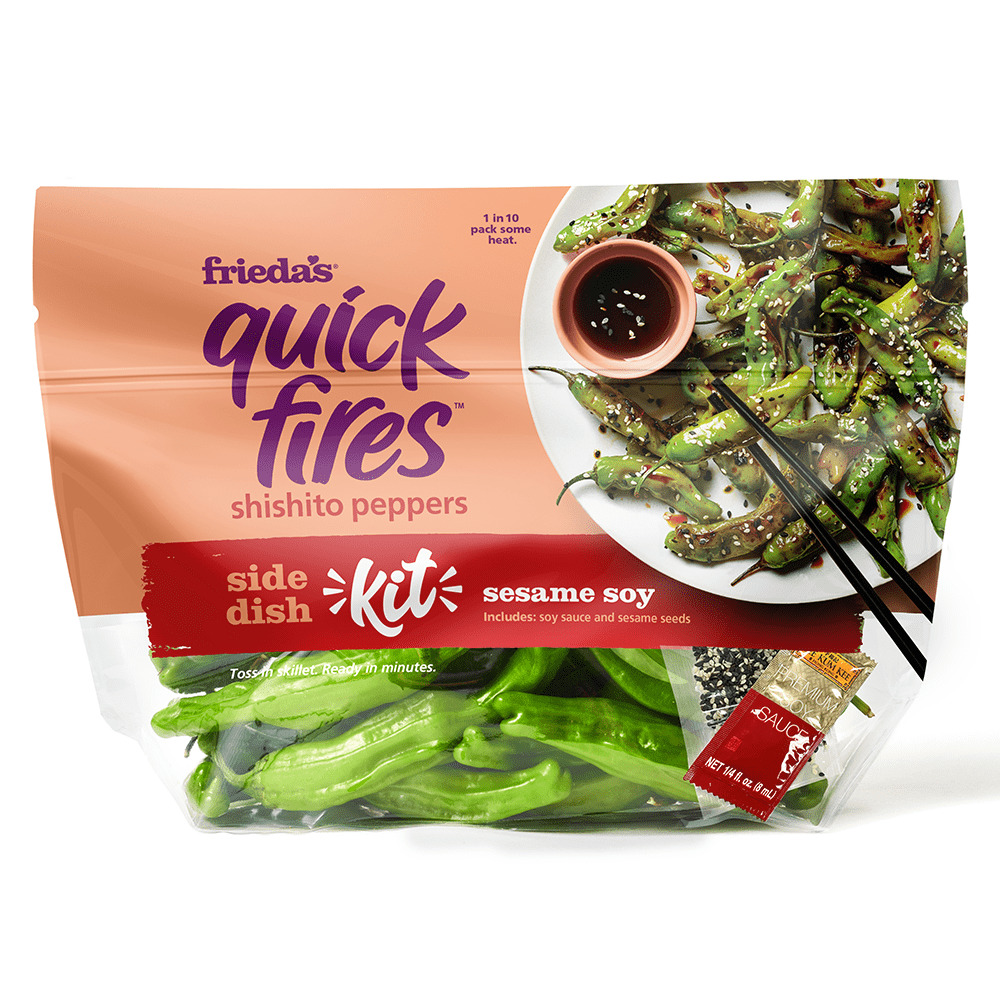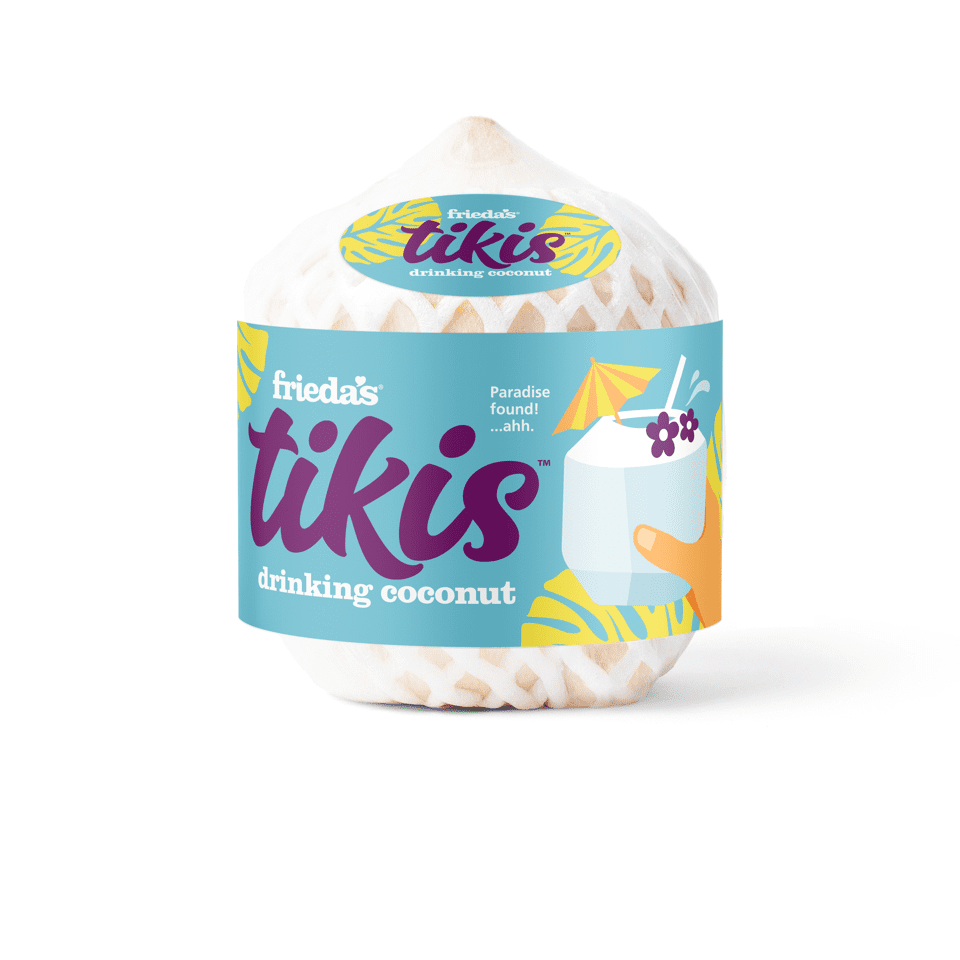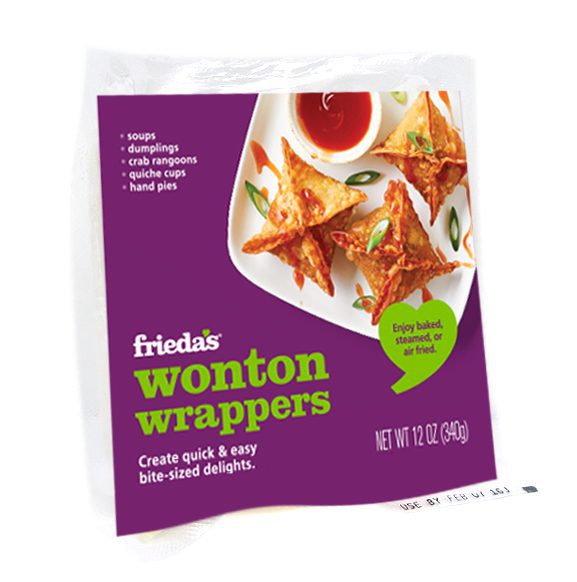We all have our favorite takeout classics—Pad Thai and curries from Thai restaurants, dumplings from Chinese restaurants, pho from Vietnamese kitchens and different masalas from Indian eateries. When you go into the supermarket to gather ingredients to make an Asian favorite at home, you may see something called “yu choy sum” and have no idea what to do with it!
We at Frieda’s have created a comprehensive list of our ethnic favorites to help you decode the mystery of Asian cooking. This guide goes way beyond just broccoli and bean sprouts—it’s all about variety, flavor and freshness—and it’s easier than you’d think when using our Asian vegetable tutorial.
This cousin to cabbage offers a satisfying crunch and delicate flavor to any meal. Though it is most commonly seen in stir-fries and sautés, we also love to use it raw in salads or braised in stews. We love adding it to our Asian Dumpling Soup recipe. Look for crisp, intact stalks with fresh looking leaves.
This “melon” is not a melon at all, in fact, it’s a gourd! The name isn’t totally misleading though—it is definitely bitter in flavor. This bitterness is easy to tame … all you need is some salt and a few minutes. Once you’ve tamed the flavor, slice the melon and add it to stir-fries, soups, curries—you name it! Choose firm, bruise-free bitter melons when shopping.
Long, slender and almost seedless, these eggplants are far less bitter than the American variety we see in our supermarkets. Chop Chinese eggplant up and add them to stir-fries, oven-roasted vegetable recipes or puree into a dip. We are really loving them in our Napa Cabbage Lettuce Cups with Chinese Eggplant and Basil. When shopping, look for a mostly smooth, shiny eggplant. Sponginess is normal.
Chinese Long Beans (A.K.A. Long Beans)
Long beans or Chinese long beans look like slightly darker (and very long) green beans. Their extra-firm texture makes them perfect for sautéing or roasting. When you’re shopping for these, you’ll want to select beans with some flexibility. Keep them refrigerated until you plan to use them.
A vegetable of many names: silk gourd, sing qua and veggie sponge. Chinese okra is primarily used in southern China, Southeast Asia and Japan. Unlike its southern American counterpart, this okra can grow up to three feet long! With its soft, spongy texture and zucchini-like flavor, it is the perfect addition to any dish. We recommend trying it in curries, stir-fries or for frying. Look for firm yet spongy okra when in the store with minimal blemishes.
You may be familiar with daikon if you eat a lot of Japanese food. It is often served pickled as “noodles,” shredded into rolls or served on the side with different types of sushi. It looks like a large, white carrot and has a sharp (yet sweet) flavor. When selecting them at your supermarket, choose a radish that is fairly firm with no dark spots.
This stunning cactus fruit is speckled with edible seeds. It’s a common co-star with açai, making for delightfully sweet and refreshing smoothies/smoothie bowls. Dragon fruit comes in a variety of color combinations, ranging from red skin/white flesh to red skin/red flesh to yellow skin/white flesh. Its country of origin can also affect the sweetness level. The red skin/white flesh variety is mildly sweet, and the yellow skin/white flesh variety is super sweet! (The red skin/red flesh version falls in between the two.) Look for unscarred skin when at the supermarket. You can also scoop out the flesh and freeze it to extend the shelf life.
Gai Lan (A.K.A. Chinese Broccoli)
This vegetable is longer and leafier than common broccoli, resembling rapini or broccoli raab. Its slightly sharp flavor is perfect sautéed with citrus, oven roasted or grilled. Look for tight heads (flowering is common and totally edible!) with crisp leaves, and keep refrigerated until ready to use.
Arguably the biggest staple in Asian cooking, ginger is spoken of in the Jewish Talmud, was written about by Marco Polo and even recommended by Henry VIII as a remedy against the plague. Its peppery and zesty flavor is a great addition to sweet and savory dishes like cakes, stir-fries, teas, smoothies—you name it! Look for roots with firm skin. Struggle with peeling ginger? Use a spoon to scrape off the skin!
Unlike its Chinese counterpart, this bitter melon has rough, bumpy skin and a tail-like vine. The bitter flavor aids in its medicinal qualities (or so the story goes), which can be tamed by sprinkling salt on the melon and letting it rest. Then you can slice and sauté, braise or even stuff Indian bitter melon! When shopping, look for firm bitter melons.
Similar to American eggplant, this version has thicker skin and a stronger flavor. This vegetable is most commonly used in baingan bharta, an Indian staple. Select Indian eggplants with mostly smooth skin that are firm to the touch. Sponginess is normal!
Commonly found in Thai and Vietnamese dishes, these stalks impart a lemony flavor to any dish. Steep lemongrass into broths and curries but remove it before serving, as it is inedible. Select stalks that feel firm and look fresh.
Napa Cabbage (A.K.A. Chinese Cabbage)
Napa cabbage is a staple in Asian cooking. Its crisp, pale green leaves are often used in slaws and salads. Napa cabbage is also the main ingredient in kimchi. We love to use it raw in Napa Cabbage Wraps or roasted for Sesame-Roasted Napa Cabbage. Look for firm and crisp cabbage when shopping.
A popular staple in Southern cooking and many Asian dishes, okra can be sliced and added to stir-fries, soups or eaten on its own. In order to avoid a slimy texture, either soak it in vinegar and water or cook on a very high heat. When you’re at the store, look for brightly colored pods.
Similar to zucchini, opo squash has a very mild flavor. Use as you would use other soft-shelled squash— in soups, stir-fries or stuff them! Look for squashes that are firm to the touch with fairly smooth skin.
This special baby bok choy variety has smooth spoon-shaped leaves and pale green stalks. It has a mild, sweet cabbage-like flavor. Like regular bok choy, it’s entirely edible and excellent in stir-fries, braised or roasted. Our favorite recipe is Grilled Shanghai Bok Choy. Look for crisp, intact stalks with fresh-looking leaves.
This brown root has white/beige potato-like flesh with occasional purple freckles. It’s starchy, nutty and delicious. Unlike some veggies, taro root MUST be cooked before consumption—it is toxic if eaten raw! This root vegetable is commonly used to make staples like poi and taro root cakes. You can also substitute it for potato in many sweet or savory recipes. Look for roots that are heavy for their size and firm to the touch.
Ranging in color from all green to green with white stripes, this little eggplant is best known for being one of the key ingredients in curries. It is also perfect for pickling, adding to sauces like nam prik (a Thai chili sauce) and sweet-and-sour dishes for texture and flavor. Like the other eggplants on this list, look for a product with mostly smooth skin that is fairly firm to the touch. Sponginess is totally normal!
These chiles can range in color from bright green to red when fully mature and are a 7-8 out of 10 on the heat scale. Referred to as “Bird chiles” when dried, these peppers are commonly found in curries, pickles and chile sauces. Choose firm, smooth and unblemished chiles.
Can you say super food? Turmeric is well known for its anti-inflammatory properties and has been a healing staple for hundreds of years. It is less spicy in flavor that its cousin, ginger, and has a more peppery and earthy profile. Make Golden Milk Turmeric Chai, Lemony Ginger Turmeric Chicken or our favorite Turmeric Roasted Cauliflower Tacos! When buying turmeric, search for firm roots.
Dive into paradise with the refreshing, sweet water from young coconuts. Known for their high level of potassium and electrolytes, these coconuts are the perfect treat. You can use the water and the sweet, delicate meat in recipes like our Young Coconut Passion Fruit Granita, Young Coconut Chia Pudding or even just blend the meat and water to make coconut milk! These are highly perishable, so keep them refrigerated until you’re ready to enjoy.
Yu Choy Sum
This vegetable looks very similar to gai lan—long and leafy with little flowers. The big distinction between these two is that yu choy sum has yellow flowers and skinny stems, where gai lan has white flowers and thicker stems. The two can be prepared very similarly—in stir-fries, soups or roasted on their own. Look for firm stems and full leaves when buying this vegetable at your supermarket.
And don’t forget to include Frieda’s wonton wrappers and eggroll wrappers in your pantry for Asian cooking!
To check out more of our Ultimate Guides, click here, here and here.


